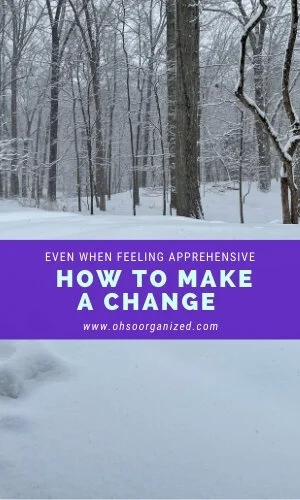Several weeks ago, one of my colleagues, Sara Skillen, wrote a post about the power of the words we use, which can be kind, harsh, energizing, or demotivating. Expressions influence our behavior and choices, so awareness is essential. Negative self-talk is common. It’s also damaging because the berating can hurt your self-esteem and prevent you from moving forward.
When working with my virtual organizing clients, I listen in various ways and pay close attention to their words. One of the changes, which frequently happen during our sessions, is a positive mindset shift. As most sessions are only one hour, this change occurs quickly. It’s exciting to see.
At the start of a virtual organizing session, I check-in and ask, “How are you doing?” We review what transpired in between sessions, discuss discoveries or challenges, and clarify the session’s focus along with their starting thoughts. Fear is one of the common emotions that surface. We don’t ignore or dwell on the words. We let them reverberate, re-clarify what we’re working on, and take action steps forward with encouragement and focus. When fear and overwhelm are met with a small action step, movement happens, and a positive shift occurs.
“When fear and overwhelm are met with a small action step, movement happens, and a positive shift occurs.”
Positive Change Clients Experience
This is a small sample of the types of changes my clients have experienced in less than an hour. Their actions were on projects such as organizing papers, clothing, schedules, memorabilia, books, and housewares. Movement enabled them to progress on their organizing goals and morph their negative thoughts into positive and hopeful ones.
“Dread” became “not overwhelmed.”
“Distracted” became “I made headway.”
“Frazzled” became “I feel good.”
“Stomach in a knot” became “better than expected.”
“Frustrated” became “I’m feeling better.”
“Worst fears” became “not scary anymore.”
“Terrified” became “I can do this!”
Recognizing the agency we have over certain parts of our lives is liberating. Our choices, when paired with action, will help us overcome fear and overwhelm. By acknowledging our emotions, we have the opportunity to work with them to bring about positive change in our lives.
Have you experienced a change in thought patterns because of actions you took? What helps you shift from negative self-talk to something more useful? I’d love to hear your thoughts. I invite you to join the conversation.














